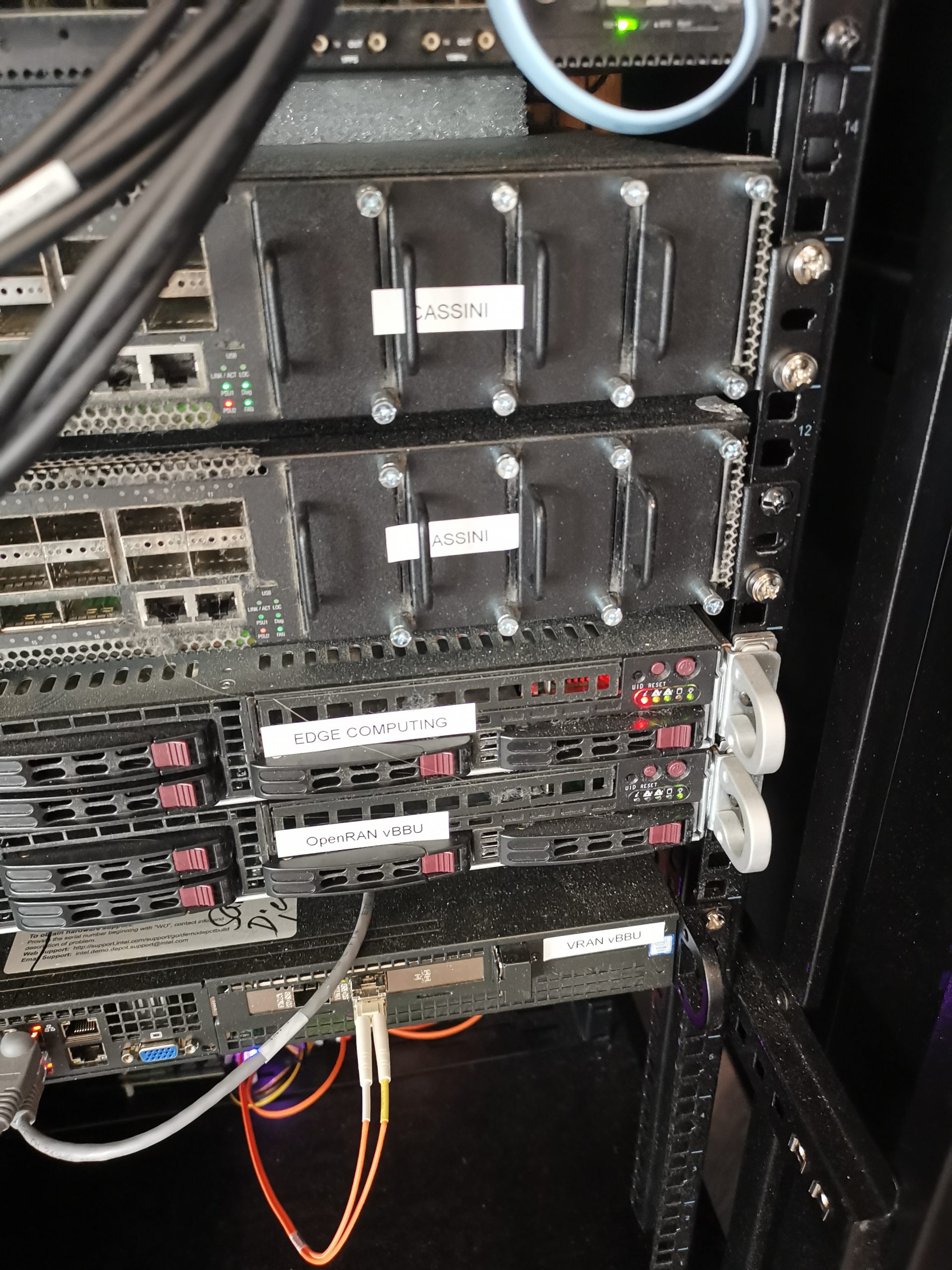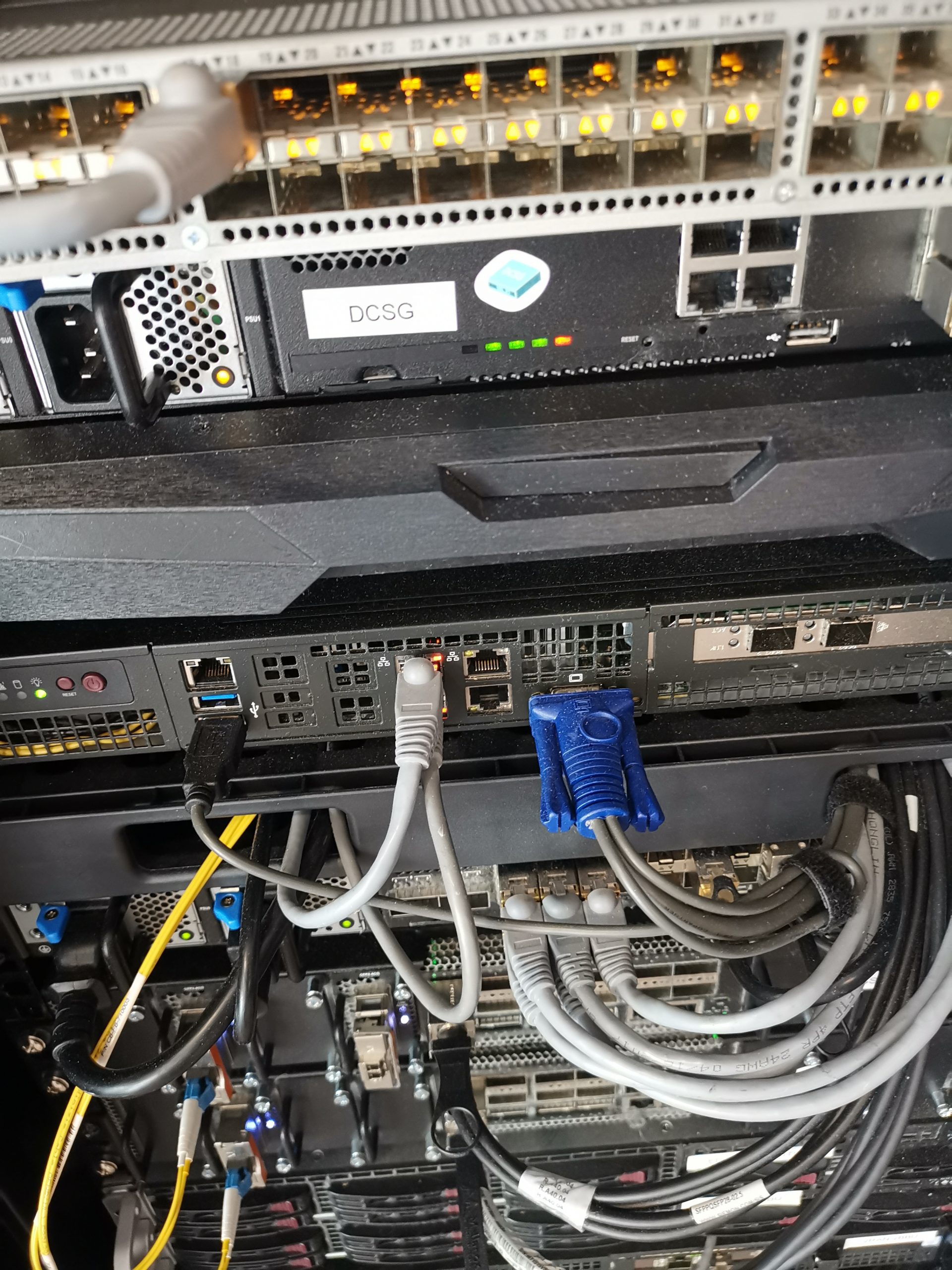Part I of TMN’s Open RAN series looked at the determination of those involved in the O-RAN Alliance to have a real commercial impact on RAN deployments.
Part II looked at what the industry can learn from one specific vRAN deployment that contains elements of openness.
Part III looks at developments related to TIP (Telco Infra Partnership) – another industry alliance bringing open RAN and open network specifications to market, and also at some commercial deployments based on those specifications.
Now three years old, TIP used MWC to demonstrate an open network architecture, with elements from different vendors plugging together in its open hardware and software model.
There was also some commercial deployment news, with Parallel Wireless winning a 25 site RAN replacement deal with Vodafone Turkey perhaps the most eye-catching.
The TIP End-to-End Network Demo
Past two sets of security guards and two reception desks, at the end of a long corridor of meeting rooms branching off the main walkway above Hall 2, Facebook had its own spacious quarters. Here you could find its End-to-End Network Demo.

This demo was intended to show off the interoperability of TIP technologies from radio access, fronthaul, core and edge. That included solutions deploying different types of access, connecting to core network software via disaggregated cell site gateway and open packet transponders, with open edge environments. The parts of the demo were made up of
RADIO ACCESS: OpenRAN base stations that disaggregate hardware and software. This integration was from Baicells with Radisys software and an Intel platform.; A vRAN RU and vBBU for non-ideal fronthaul, via a solution from Altran, Benetel, Phluido.; Open Cellular base station with chip support from Marvell. ; A LimeMicrosystems CrowdCell that uses macro coverage as backhaul
BACKHAUL AND TRANSPORT: The first three of the above access techs connected into a Disaggregated Cell Site Gateway (GSCG) on EdgeCore hardware with Adva Optical’s Ensemble Activator network operating system; Transport was via Cassini whitebox open packet transponders, with EdgeCore, Fujitsu, IpInfusion, Lumentum, NTT.
CORE and EDGE: Athonet provided core network and edge core software. MobiledgeX and Qwilt provided edge applications.
Parallel parking in traditional vendors’ reserved places
As one TIP staff member said to TMN, the above architecture is all about disaggregation, trying to separate hardware and software, using commoditised hardware to give smaller software vendors the opportunity to integrate as part of an end-to-end solution.
That’s well enough, but market adoption will be down to operators committing to trust in the practicality, performance and interoperability of the ecosystem. And proof points are emerging.
One very interesting one to keep an eye on is in Turkey, where Vodafone is fully replacing its legacy 2G-4G vendor in 25 rural and suburban base station sites with a 2G+4G OpenRAN macro site solution from Parallel Wireless.
The sites are in a mix of topologies and, according to Rajesh Mishra, CTO of Parallel Wireless, can be easily reconfigured to different 2-4G combinations, including a migration to 5G, due to the software architecture Parallel Wireless deploys. Clearly if the trial goes well, Parallel hopes to expand its engagement with the operator.
Parallel’s Converged Wireless System combines a whitebox base station based on general purpose processing with RAN software that is abstracted to its COTS-based HetNet Gateway. That means operators can combine and evolve to 2G/3G/4G/5G without additional hardware installations, Mishra said.
The HetNet Gateway enables the Open RAN architecture by using standard-based and open interfaces between network components and, according to Parallel, can support any RAN split. This, Mishra said, is important because it addresses the economics of the vRAN Option 7 split that Altiostar, for example, supports.
“With some versions the problem is you put so much server compute on it that it’s not really a business case for you because then you are back to the legacy NEPs being cheaper. You can never solve this unless you have a really high ARPU. This is where we come in. We ask the operator what do you want as an end result – forget about the splits etc… what do you want at the end of the day? If you want a thousand users per sector I will give you that. What’s your BBU? I’ll give you $400 x86 versus $20,000 x86. We can do that today because our goal always was not to just compete on the spec but on the spec on a price point. That’s really where we come in. Whether you talk to Mavenir or Altiostar or anybody else who turns up in the future, they can’t go there.”
“The RAN and stack is trivial, that’s not a differentiator. We do the features and roadmaps. What we have what nobody else has is this gateway piece (HNG). This layer is where we can consolidate a whole bunch of network functions that used to be siloed and then we can abstract the RAN from the core, so to the core we look like one big base station. That means we can orchestrate private LTE, public safety macro handovers, indoor networks, small cells, Local Break Out, and in addition this is where the OpenRAN piece comes in because we can orchestrate other vendors’ hardware.”
Mishra said Parallel is currently in some operator labs orchestrating large vendors’ high end hardware via its software.
Vodafone is also targeting sites for redeployment in Africa, with OpenRAN trial deployments planned with Parallel Wireless as well as Mavenir. Mavenir also has an indoor trial planned with Vodafone UK.
Telefonica

Telefonica’s Open Access prototype kept under glass for now
Telefonica is deploying sites in Peru, Colombia and Argentina for its pilot OpenRAN trials, again featuring Parallel Wireless and also Altiostar.
The operator also announced its open platform – a first prototype of an Open Access that sees the disaggregation and virtualisation of the access network equipment, both mobile (open radio node) as well as fixed (open OLT), and of the customer premises equipment designed as a white box with service logic integrated in the cloud. The prototype stack shown at MWC included distributed units (the silver blades top of box) from Mavenir and Altiostar.
Juan Carlos García, Director of Network Technology and Architecture at Telefónica said: “Our Open Access Project represents a revolutionary step towards new software-based open solutions that will open new deployment alternatives and new business opportunities. It will for sure help in facing the challenge of implementing denser networks and supporting efficient solutions for specific network slices and services. Operators and manufacturers are collaborating to make this possible.”
Disaggregated Cell Site Gateway

Schematic of the DSCG in deployment.
Vodafone and Telefonica also announced the winners of their RFI for suppliers of the TIP-specified Disaggregated Cell Site Gateway. The chosen hardware suppliers are Alpha Networks; Delta Networks; and Edgecore Networks, with OS software from ADVA; IPInfusion; and Volta Networks.
On Vodafone’s booth there was a demo of the DSCG, as now selected.

The DCSG as displayed on the Vodafone MWC booth.
OpenRAN 5G NR Group
Finally, and as TMN wrote back in October, TIP has also formed an OpenRAN 5G NR Project Group, to be co-chaired by Vodafone and Sprint. The February press release from TIP said that Group will “re-affirm the roadmap towards next generation, white-box disaggregated RAN solutions that set the stage for a more flexible end-to-end network”.





